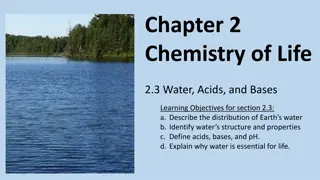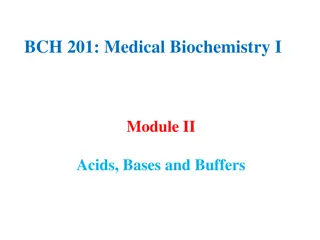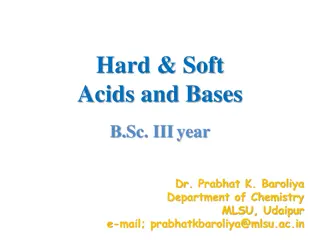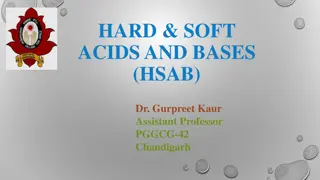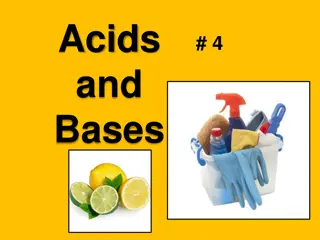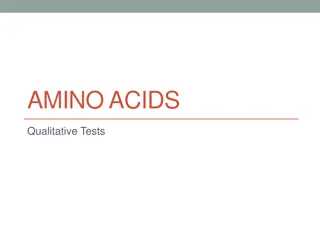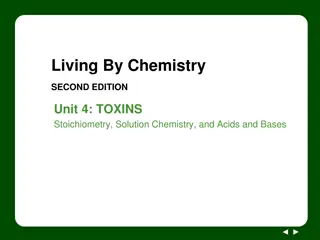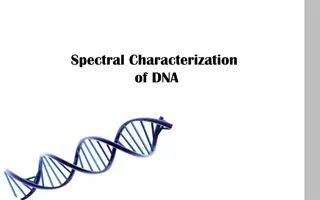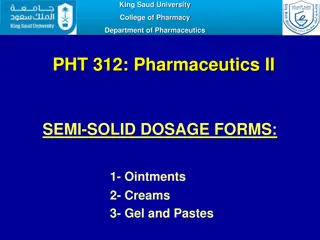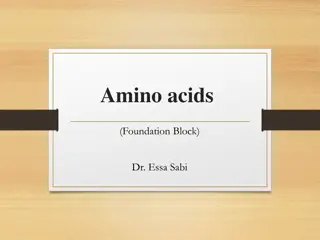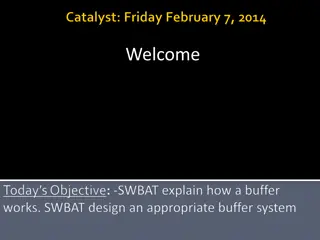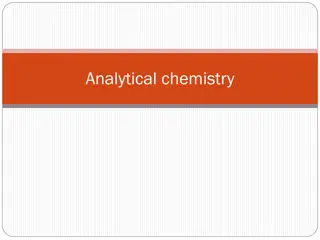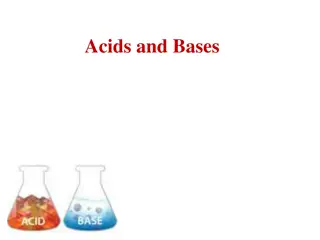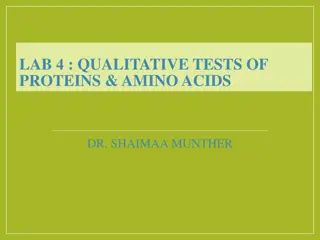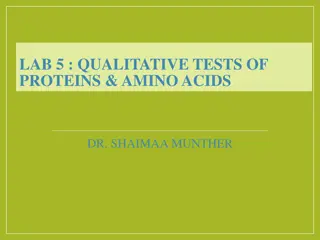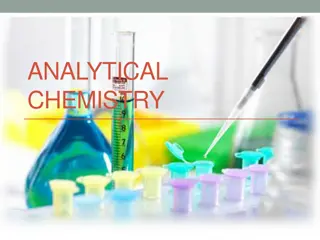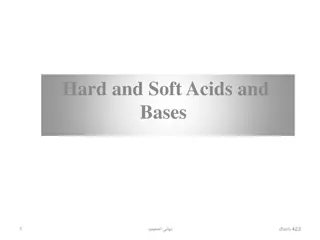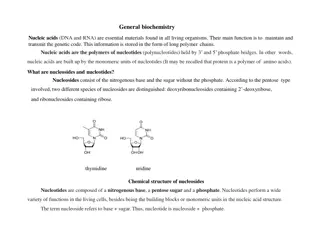
Particles in Solution: Dissolving Like Electrolytes and Acids & Bases Introduction
Explore how substances dissolve based on polarity, understand electrolytes as substances that conduct electricity in water, and learn about acids and bases and their properties when dissolved. Discover the concepts of like dissolves like, electrolyte dissociation, and the definitions and uses of acids and bases.
Download Presentation

Please find below an Image/Link to download the presentation.
The content on the website is provided AS IS for your information and personal use only. It may not be sold, licensed, or shared on other websites without obtaining consent from the author. If you encounter any issues during the download, it is possible that the publisher has removed the file from their server.
You are allowed to download the files provided on this website for personal or commercial use, subject to the condition that they are used lawfully. All files are the property of their respective owners.
The content on the website is provided AS IS for your information and personal use only. It may not be sold, licensed, or shared on other websites without obtaining consent from the author.
E N D
Presentation Transcript
Ch. 8 Solutions, Acids, & Bases III. Particles in Solution Like Dissolves Like Electrolytes
A. Like Dissolves Like Polar substances will only dissolve in polar liquids Rubbing alcohol and water Nonpolar substances will only dissolve in nonpolar liquids Oil and butter Substances that aren t the same don t mix. Oil and water
A. Like Dissolves Like NONPOLAR POLAR NONPOLAR POLAR Detergents polar head with long nonpolar tail can dissolve both types (polar and nonpolar)
B. Electrolyte An electrolyte is a substance that when dissolved in water form ions Electrolytes get their name from the fact that they conduct electricity in water. Example: salt dissolved in water Many sports drinks contain electrolytes which are salts dissolved in water
B. Electrolytes - - - + + + salt acetic acid sugar Weak Electrolyte solute exists as ions and Molecules Slightly conducts electricity Non- Electrolyte solute exists as ions only Easily conducts electricity Electrolyte solute exists as molecules only Does NOT conduct electricity
B. Electrolytes Dissociation separation of +/- ions when an ionic compound dissolves in water
B. Electrolytes Ionization breaking apart of polar covalent molecules into ions when dissolving in water
Ch. 8 Solutions, Acids, & Bases IV. Intro to Acids & Bases Definitions Properties Uses
A. Acids Acids contain at least one hydrogen atom that can be removed when the acid is dissolved in water. These form hydronium ions, H3O+. Also called a proton donor HCl + H2O H3O+ + Cl
A. Bases Bases form hydroxide ions (OH-) in a water solution. a proton acceptor NH3 + H2O NH4+ + OH-
A. Indicators Indicators are an organic substance that changes color in an acid or base. Examples: litmus - red/blue phenolphthalein - colorless/pink goldenrod - yellow/red red cabbage juice - pink/green
B. Properties ACIDS BASES bitter taste sour taste pH greater than 7 pH less than 7 corrosive corrosive electrolytes electrolytes turn litmus blue turn litmus red slippery feel react with metals to form H2 gas
C. Uses ACIDS H3PO4 phosphoric acid - soft drinks, fertilizer, detergents H2SO4 sulfuric acid - fertilizer, car batteries HCl hydrochloric acid - gastric juice HC2H3O2 acetic acid - vinegar
C. Uses BASES NaOH sodium hydroxide -lye, drain and oven cleaner Mg(OH)2 magnesium hydroxide - laxative, antacid NH3 ammonia - cleaners, fertilizer
Ch. 8 Solutions, Acids, & Bases V. Strength of Acids & Bases Strength vs. Concentration Strong vs. Weak pH
A. Strength vs. Concentration Strong and weak tells how easy the acid or base dissociates in solution. Concentration The amount of acid or base in a solution. It is possible to have a dilute concentration of a strong acid that would be less harmful than a concentrated weak acid.
A. Strength of Acids & Bases The strength of an acid or base depends on how completely a compound separates into ions when dissolved in water. Ions can carry an electric charge so a strong acid will carry more electricity than weak acid.
B. Strong vs. Weak - Strong Acid/Base 100% ions in water strong electrolyte HCl, HNO3, NaOH, LiOH + Weak Acid/Base few ions in water weak electrolyte HC2H3O2, NH3 - +
B. Strong Acids Acids that ionize almost completely in a solution are strong acids. Ex: HCl, HNO3, and H2SO4 They have a very low pH (0-1).
B. Strong Bases Bases that dissociate completely in a solution are strong bases. Ex: NaOH They have a very high pH (13-14)
C. pH Scale pH (potential of Hydrogen) a measure of the concentration of H+ ions in a solution measured with a pH meter or an indicator with a wide color range (0-14) 14 0 7 INCREASING BASICITY INCREASING ACIDITY NEUTRAL
C. pH Scale pH of Common Substances
Concept Test Which of the following "molecular" pictures best represents a concentrated solution of the weak acid HA? A B
ConcepTest Is the following statement TRUE or FALSE? A strong acid has a lower pH than a weak acid. True- But: Strong/weak refers to amount of ionization whereas pH refers to concentration of H+.
Ch. 8 Solutions, Acids, & Bases VI. Neutralization Neutralization Reaction
A. Neutralization Reaction Chemical reaction between an acid and a base. Products are a salt (ionic compound) and water.
A. Neutralization Reaction ACID + BASE SALT + WATER HCl + NaOH NaCl + H2O = Neutralization does not always mean pH = 7.
A. Neutralization Reaction KOH + HNO3 H2O + KNO3 Acid HNO3 Base KOH Salt KNO3

